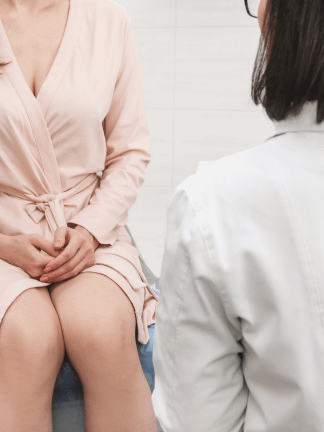Did you know your most intimate area is home to billions of tiny resident bacteria?1 This may sound odd at first, but it is generally a good thing. The vaginal health of women relies on a delicate balance of good bacteria that make up the vaginal microbiome which helps to keep women free from vaginal infections.1 Unfortunately, if the balance of good bacteria gets thrown off, you may end up with vaginal infections, such as bacterial vaginosis or yeast infections.1,2
Key takeaways
- Bacterial vaginosis is a vaginal infection that occurs when levels of good bacteria drop in the vagina and allows bad bacteria to thrive1
- Bacterial vaginosis can be caused by a variety of internal and external factors1
- Treatment involves decreasing the number of bad bacteria and restoring a healthy balance of good bacteria1
What is Bacterial Vaginosis?
Bacterial Vaginosis is a type of vaginal infection that can occur in the vagina due to an imbalance in the naturally occurring vaginal bacteria. About 35% of women will experience bacterial vaginosis in their lifetime.5 These vaginal infections can happen at any age, but they are more common in women of reproductive age.3
What Causes Bacterial Vaginosis
Any internal or external factor that changes the balance of your vaginal pH and microbiome may lead to bacterial vaginosis, such as:1,4
Internal Factors
- Hormones (e.g., fluctuations during the menstrual cycle, especially on red days)
- Age
- Immune system
External Factors
- Antibiotic use
- Infections
- Environmental microbial exposure
- Unprotected sex
Normally the vaginal microbiome is dominated by “good” types of bacteria called Lactobacilli.1 These bacteria are great at keeping women’s intimate areas healthy and free from vaginal infections because they make antimicrobial compounds and keep the vaginal pH acidic.1 Women who have bacterial vaginosis show a sharp drop in the total number of Lactobacilli and that allows other “bad bacteria” to grow in their place.1
Bacterial Vaginosis Symptoms Symptoms of bacterial vaginosis include:3
- Thin, vaginal discharge that may be gray, white or green
- An unpleasant, "fishy" vaginal odor
- An itchy vagina
- Burning while you pee
Bacterial Vaginosis Treatment
Bacterial vaginosis treatment typically involves antibiotics.1,4 However, bacterial vaginosis can be a bit of a boomerang, coming back even after antibiotic treatment with the risk that antibiotic resistance may develop.1 Consult your doctor to find the best treatment options for you.
Always ready the label before use
This article is for educational purposes only. If symptoms persist, consult your doctor.
ASC I0124P080625B

